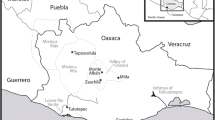Abstract
Indian artisans and craftsmen have long been masters at extracting and shaping metals and alloys, as proven by archaeological finds from the 2nd—3rd millennia B.C. For example, two well-known artifacts, castings of the dancing girl of Mohenjo Daro and the Mother Goddess of Adichanallur, Tamilnadu, depict a high degree of metallurgical knowledge. Those castings were formed by the lost wax process, which later was modified and became known as investment casting. In various parts of India, this age-old casting process is still being practiced, without any major modifications. This paper discusses details of the process used by the Indian artisans of Swamimalai, Tamilnadu, and Mannar, Kerala, South India in shaping copper-base alloys into icons and utensils, bells, and lamps.
Similar content being viewed by others
References
E.G. West,Copper and Its Alloys (New York: Ellis Horward Ltd., John Wiley and Sons, 1982), pp. 106–110.
Metals Handbook, vol. 2, 9th ed. (Materials Park, OH: American Society of Materials, 1979), p. 418.
J.E. Hughes,Metals and Materials (May/June 1981), pp. 51–58.
McGraw Hill Encyclopedia of Science and Technology vol. 2 (1997), pp. 379–380.
Martha Goodway,Journal of Metals, 40 (3) (1988), pp. 36–37.
Martha Goodway,Journal of Metals, 40 (4) (1988), pp. 62–63.
S.G.K. Pillai, R.M. Pillai, and A.D. Damodaran,Journal of Metals, 44 (3) (1992), pp. 38–40.
The Hindu Weekly Magazine Edn., 3 (17 April 1994), IX.
R.M. Pillai, S.G.K. Pillai, and A.D. Damodaran,Metals, Materials and Processes, 13 (2–4) (2001) 291–300.
R.M. Pillai, A.D. Damodaran, and S.G.K. Pillai,Trans. IIM (in press).
Sharada Srinivasan,Journal of Metals, 50 (7) (1998), pp. 44–47, 49–50.
S.G.K. Pillai et al.,Journal of Metals, 46 (3) (1994), pp. 59–40.
R.M. Pillai, S.G.K. Pillai, and A.D. Damodaran,Practical Metallography, 32 (9) (1995), pp. 478–482.
Metal Craft (Bangalore: Pubr. Crafts Council of India, 1993).
C. Sivaramamurti,South Indian Bronzes (Madras: Lalit Kala Academy, 1981).
N. Gopalakrishnan,Ancient Indian Knowledge in Metals and Alloys Heritage Publications, Series 38 (Thiruvananthapuram, India: Indian Institute of Scientific Heritage, 2001), pp. 20–21.
Author information
Authors and Affiliations
Rights and permissions
About this article
Cite this article
Pillai, R.M., Pilhii, S.G.K. & Damodaran, A.D. The lost-wax casting of icons, utensils, bells, and other items in South India. JOM 54, 12–16 (2002). https://doi.org/10.1007/BF02709214
Issue Date:
DOI: https://doi.org/10.1007/BF02709214




